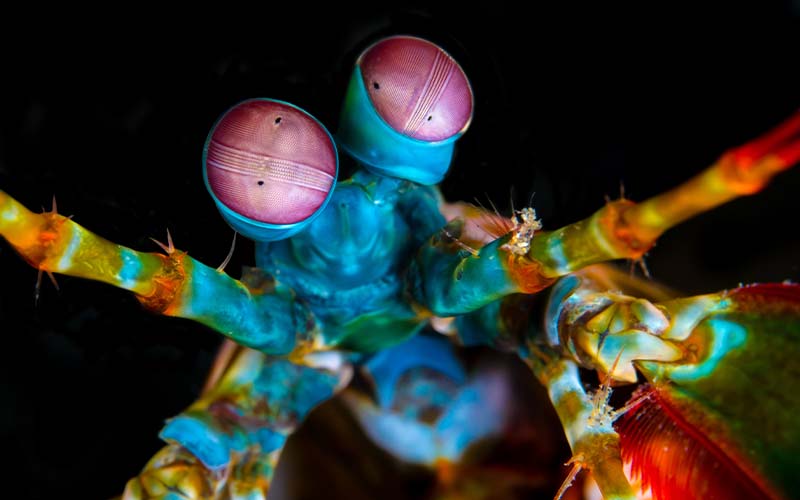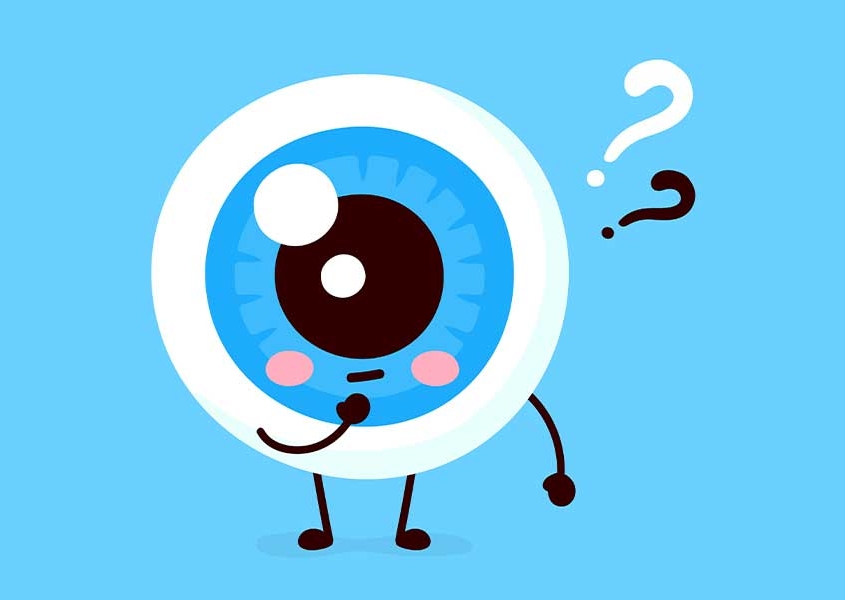Animals With the Best Vision

Medically reviewed by Brad Boyle, OD – Written by Advanced Family Eye Care staff on May 12, 2021 – Last edited on May 31, 2023
 Medically reviewed by Brad Boyle, OD – Written by Advanced Family Eye Care staff on May 12, 2021 – Last edited on May 31, 2023
Medically reviewed by Brad Boyle, OD – Written by Advanced Family Eye Care staff on May 12, 2021 – Last edited on May 31, 2023
From the eagle’s ability to spot prey from miles away to the chameleon seeing almost every angle of its surroundings without moving its head, the animal kingdom is filled with unique and complex visual perspectives. Each animal has adapted their vision to survive in their specific habitat.
Here are the animals with incredible vision capabilities and how humans stack up in the mix.
Humans – Best Mammal Vision
In comparison to the rest of the animal kingdom, humans have very good eyesight. We can see objects with clarity from far distances, have strong depth perception and can distinguish between up to 1 million different colors.
It is hypothesized that we can thank snakes for our good eyes. Throughout evolution, humans have had a higher exposure to venomous snakes than other mammals, so our eyes have adapted to be able to spot and avoid these dangerous predators.
We have the best vision out of the mammal class and arguably are second only to birds when it comes to on-land vision.
Owls – Best Night Vision
For humans and birds alike, the eye’s retina (a layer of cells in the back of the eye that receives and passes nerve impulses to the brain) is composed of a combination of cones and rods. Rods interpret light and cones interpret colors. The more rods an eye has, the better its ability to see in low light. The owl has an abundance of these light-sensitive rod cells – almost a million per square millimeter, a density of 5 times greater than humans.
In addition to densely packed rods, the owl’s eyes are very large relative to the rest of its body. Two owl eyes weigh roughly an ounce, more than the eyes of a 200 lb. human.
Large eyes and lots of tightly packed light-sensitive rods allow the owl to have the best night vision in the animal kingdom.
Sharks – Best Underwater Vision
Like owls, shark eyes are dense with retinal rods, which allows them to see well in dark and murky waters. In addition, their eyes contain a layer of mirrored crystal tissue called the tapetum lucidum. The tapetum lucidum acts to reflect light back into the retina, amplifying the amount of available light in their underwater habitat.
It is estimated that in perfect conditions a shark can see 30-50 feet ahead of them. When factoring in their ability to see underwater in unfavorable conditions, it is estimated that they can see around 10 times better than humans can underwater.
Chameleons – Broadest Field of Vision
The chameleon’s ability to rotate each eye independently of each other allows it to see at nearly every angle without moving its head. It can see 90° vertically and 180° horizontally for a total field of vision of 342°, nearly a full 360°. The ability to see almost every square inch of its surroundings without having to move anything but its eyes allows the chameleon to hunt without scaring off its prey.
Honorable mentions for broad angle vision include the dragonfly, goat, and spider.
Butterflies – Best Color Vision
The human retina has 3 types of cones that allow it to perceive color – blue, green, and red. In contrast, butterfly retinas do not contain cones, rather they have 6 or more photoreceptor classes with unique spectral capabilities. The bluebottle butterfly has at least 15 different types photoreceptors.
While much is still to be learned about the complex vision of the butterfly, it is believed that many of these photoreceptors are used to detect very specific types of color stimuli, such as objects hidden in vegetation or fast moving objects in the sky.
Mantis Shrimp – Most Complex Vision
One animal who’s vision we have even more to learn about than the butterfly is the mantis shrimp – taking the crown for the animal with the most complex vision.
The mantis shrimp has between 12 and 16 photoreceptors and can see both UV and polarized light (two things that humans cannot see). In addition, they are the only animal to detect circularly polarized light and to adjust their sensitivity to wavelengths based on their environment.
The complex eye anatomy of the mantis shrimp suggests that the visual signal is pre-processed by the eye before it passes to the brain. In other words, their eyes are so complex that they essentially have a mind of their own.
Eagles – Best Eyes in the Animal Kingdom
Visual acuity is defined as the ability to focus on images from a given distance, and is measured on the 20/20 scale. The human standard of “perfect” vision is 20/20. One with 20/20 vision can see clearly at a distance of 20 ft.
To put that into perspective, an eagle has the visual acuity of 20/5 – meaning that it can see at 20 feet what a human with 20/20 vision would need to be 5 feet away from to see. By this standard, an eagle’s visual acuity is 4 times stronger than ours. With the sharpest distance vision of all creatures, they are able to see and focus in on prey as small as a mouse from up to 3 miles away.
In addition to their unprecedented ability to see clearly at very far distances, eagles have near panoramic vision, a heightened sense of color vision, and can see UV light. While “good” eyesight is largely dependent upon a creature’s unique need for their specific habitat, by human standards it is safe to say that the eagle has the best eyesight in the animal kingdom.
Conclusion
The animal eye has evolved to fit the survival needs of their respective habitat. Good eyes for one animal may not be so good for another.
While many factors are to be considered when comparing eyesight amongst creatures, one thing for certain is that eagles take the crown for best all around eyes, primarily for their unprecedented ability to see clearly from far distances.
You may also be surprised to know that compared to other animals your eyes are pretty good too.
About Us
We are Advanced Family Eye Care, optometrists in the Cedar Valley, Iowa with locations in Waterloo and Independence. Our experienced eye doctors dig deep to assess your overall eye health to improve your quality of life. That is what makes us eye care beyond the prescription.













